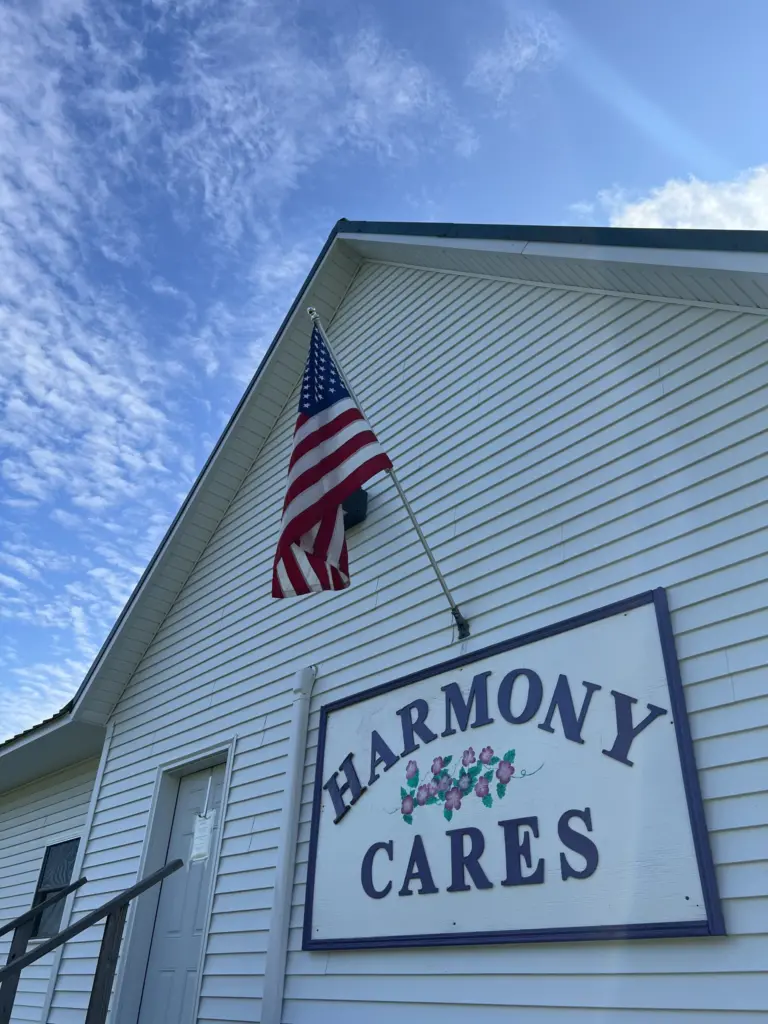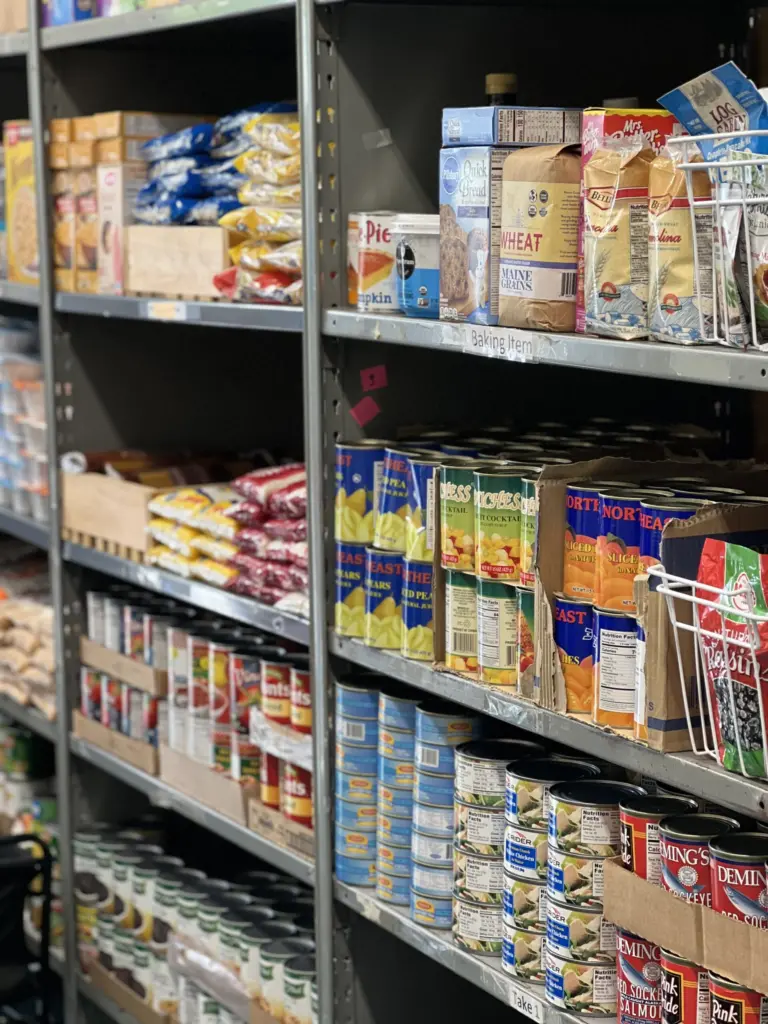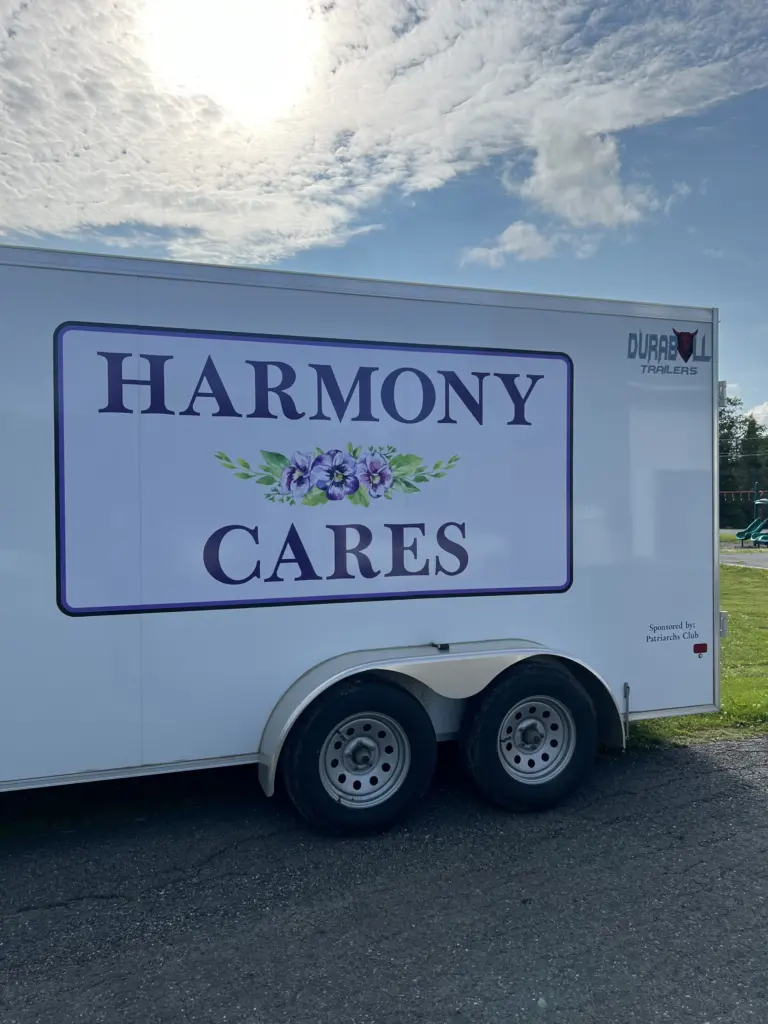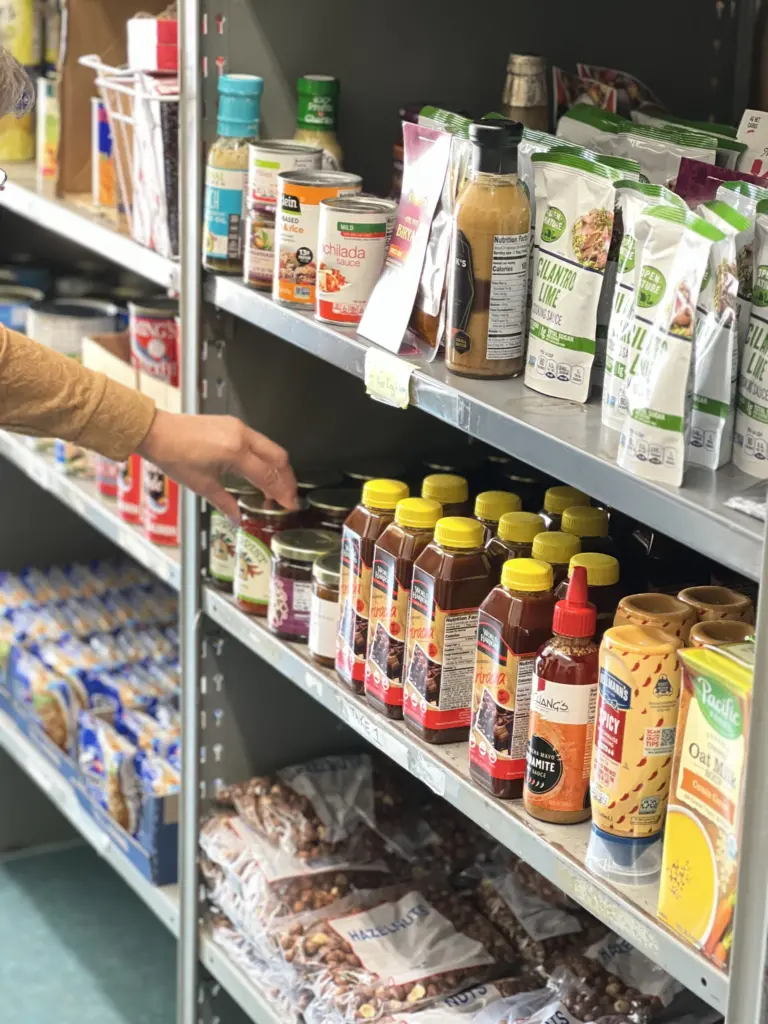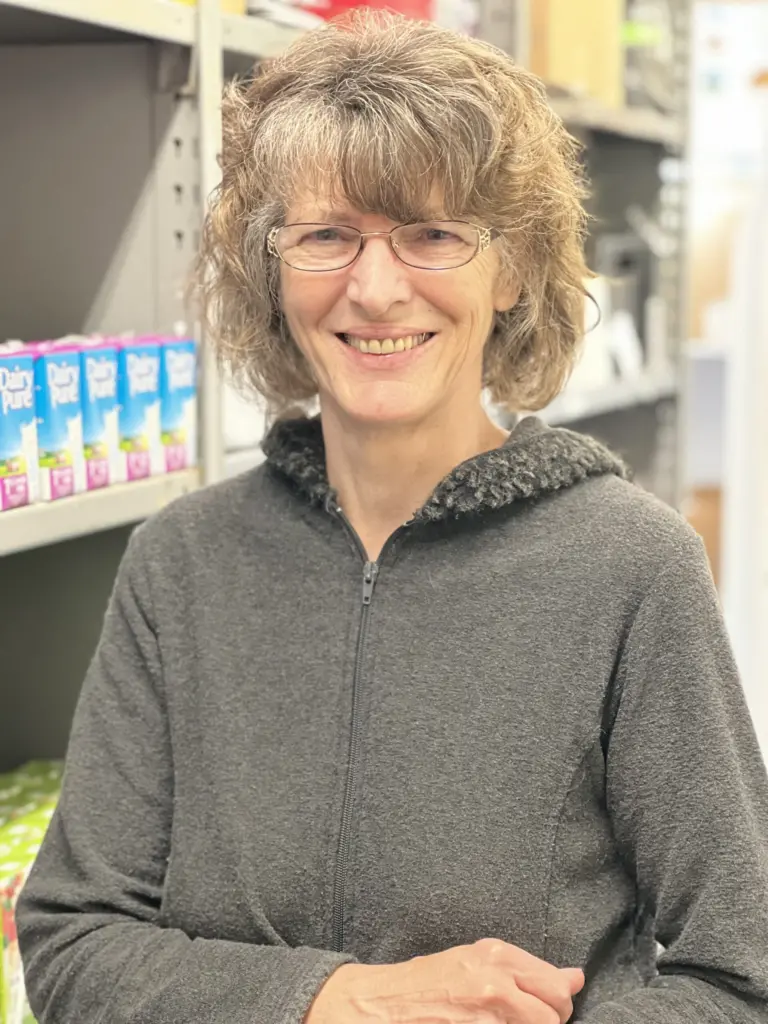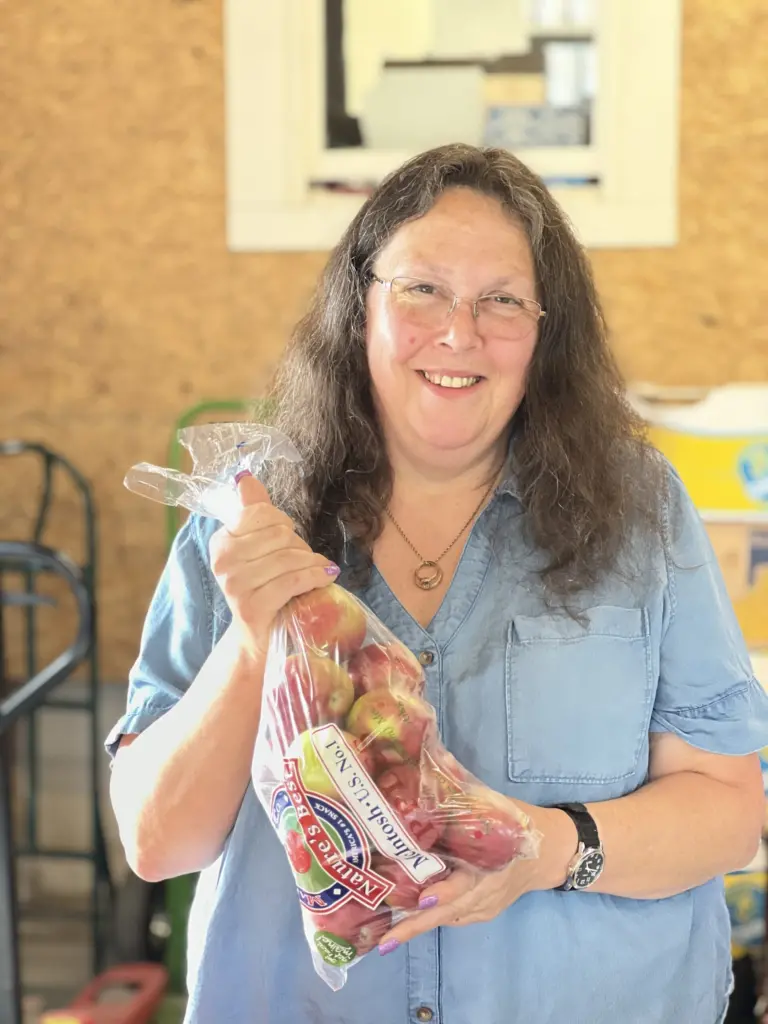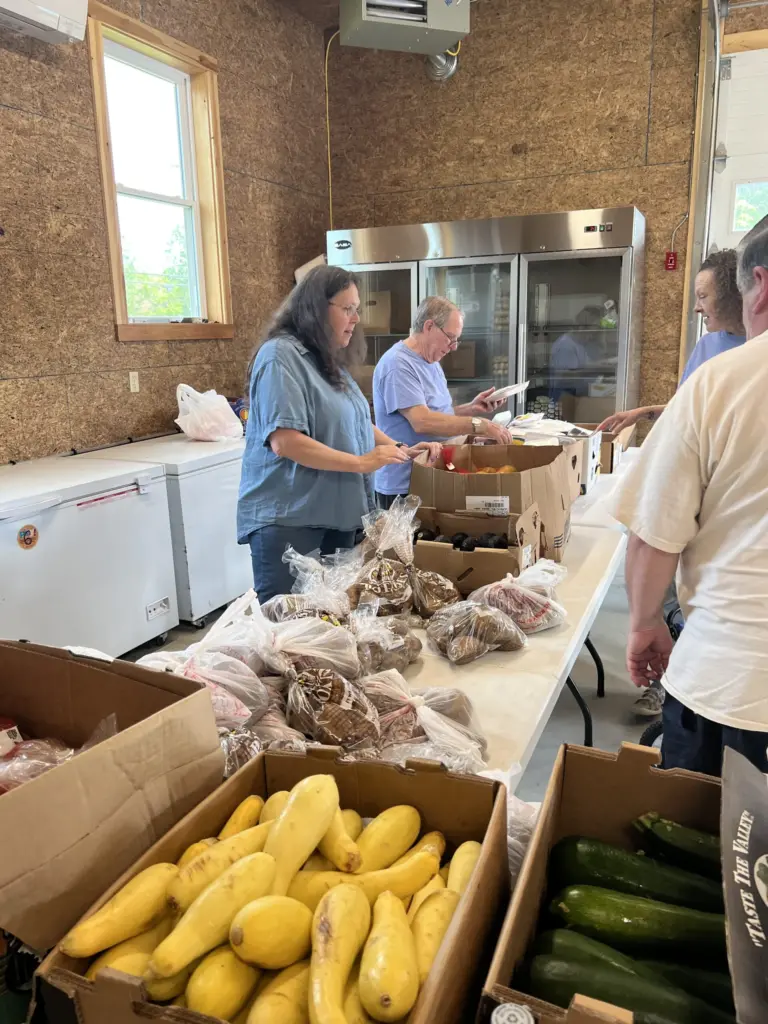Through the winding backroads of rural Maine, we arrived in the small town of Harmony, in Somerset County, on an early summer evening. Like the town name, this community knows how to unite and uplift each other. In 2017, Harmony didn’t have an active food pantry, and the nearest pantry was over a 30-mile, round-trip drive to Cornville. When school nurse Mel Chadbourne (now co-director of the pantry) saw more and more kids experiencing hunger at school, something had to be done. She set up a small area in her office with cereal, peanut butter, and other shelf-stable items. This was the closest the town had to a food pantry. They started providing bags of food to the children, and it was apparent a pantry was needed in town. That’s when she and co-director Rodena Clowry initiated plans to open a pantry. Mel still works as the school nurse and sees the need for the pantry daily.
According to Feeding America, the food insecurity rate in Somerset County is 14.3 percent[1], which means about 7,220 people living in the area don’t have reliable access to enough affordable, nutritious food. Seventy-eight percent of people in Somerset County are below the threshold for the Supplemental Nutrition Assistance Program (SNAP) and other nutrition programs. [1] Based on 2021 Feeding America data.
With the increasing need for a food pantry, and with the assistance of the all-volunteer Harmony Patriarchs Club, a new organization was formed; Harmony Cares: Neighbors Helping Neighbors Food Pantry. The program opened its doors in the spring of 2017 with the hope of helping families in Harmony, Cambridge, and Wellington access food.
Initially, the program solely survived on donations and resided in a small building, which had served many roles for the community over the years. It was home to a church that burned down, a chicken coop, Veterans of Foreign Wars center, and a small school library. Now with partners like Good Shepherd Food Bank, the US Dept of Rural Development, and the Patriarchs Club, the building has been remodeled and has space enough to provide for a comfortable shopping experience, including neighbors’ choice of produce downstairs and two aisles of dry-food grocery-style shopping upstairs.
